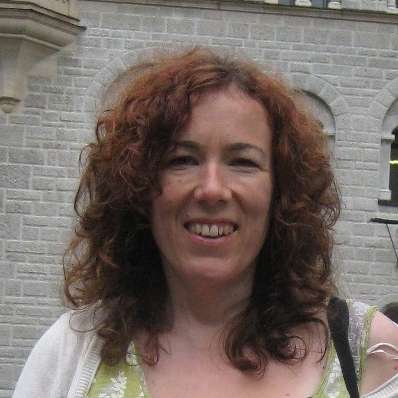Ensemble 7Bridges, directed by Richard Rijnvos, Head of Composition at Durham University, and conducted by James Weeks, brings together some of the North East’s specialist professional performers of contemporary music, supported by Durham University, with the aim of contributing to the development of new music in the North East. In their programme welcome note, the ensemble say that they aim to include at least one première in every concert programme, and in fact, their launch concert this evening at The Sage Gateshead, included not one, but two works commissioned by the ensemble – by Gerald Barry and Bryn Harrison.
The earliest work on the programme this evening probably encapsulates much of the prejudice against modern music. Iannis Xenakis’ 1969 piece Anaktoria was loud, brutal and ugly, yet also compelling, and the commitment of the eight performers gave the piece an exciting momentum. Technique and range were pushed to the limits, particularly for clarinettist Dov Goldberg, and although it was hard on the ears, it was also impressive. The five much more recent pieces that followed, showed quite clearly how composers have been able to move away from these extreme, producing music that is innovative, experimental, but also lovely to listen to.
Gerald Barry’s No People takes its title from a surrealist poem by Raymond Roussel. The poet apparently commissioned artists to illustrate his poem but did so anonymously and only giving the artists very concise instructions. How this related to Barry’s music was not explained; perhaps, like Roussel’s artists, we were to be left to come up with our own images. Underneath the harsh harmonies and aggressive bowing of the opening section lay a simple rhythmic and harmonic structure that echoed classical simplicity, but became gradually more complex, with odd extra beats and thrown-off timing. But just when this minimalist repetition began to get boring, the piece suddenly veered off in an entirely different direction. The two French horns took up an Irish folk song often sung by sports fans, The Fields of Athenry, accompanied by lively strings, in what sounded like a wonderfully demented tribute to Vaughan Williams’ folksong settings. Again, just as I began to feel that this was enough, the piece broke off, ending abruptly in mid-flow.
Bryn Harrison’s piece seven circular forms also came without any programme notes, although in this case, the title was fairly self-explanatory, as the music wound around in gently undulating minimalist patterns. Of all the works on this evening’s programme, this was the one that failed to engage me; it was a pleasant sound, but there was not enough to it to make it an interesting concert piece.
Gérard Pesson’s Nebenstück comes from the composer’s memory of a ballade by Brahms. Scored for a wonderfully Brahmsian line-up of string quartet plus clarinet, it beautifully reflects what our minds do to the memory a piece of music over a long period – unless you’re Mozart, you don’t recall the entire piece, note for note, but retain lovely little fragments. Pesson in this piece takes the fragments back out of his mind for an audience to hear.
A piece with a long, obscure title that includes plastic bags, the sound of tearing newspaper, tin cans and kazoos may also sound like something from a modernist nightmare, but Laurence Crane’s Come Back to the Old Specimen Cabinet John Vigani, John Vigani, part 3 for solo cello with accompaniment from the aforementioned items was extraordinarily beautiful. It was inspired by the specimen collection of the University of Cambridge’s first professor of chemistry, and forms a number of little samples, each with a different texture, using different accompaniments and a range of extended cello techniques. A simple rising and falling cello motif was accompanied by gently rustling plastic bags, a sound that was surprisingly restful, as was the sound of gentle finger-tapping on tin cans whilst cellist Louisa Tuck strummed her strings. Even the kazoos, playing crazy arpeggios and five-note scales in unison with the cello were effective, not silly.
There was certainly an air of silliness about the final work, though. Narayana’s Cows by Tom Johnson takes the long-established relationship between music and mathematics to its extreme. Narayana was a 14th-century Indian mathematician who posed a problem about cows and their calves to demonstrate exponential population growth. Put simply, the ensemble, and a humorous narrator, demonstrate how a herd of breeding cows grows over 17 years, from 1 to 872, by playing one note per cow, with harmonic shifts marking each new generation. The music stands needed to hold the enormous score seemed to breed almost as rapidly the cows, and there was some furious counting going on, but if modern music needs a show-stopper – this is the piece to pick.


